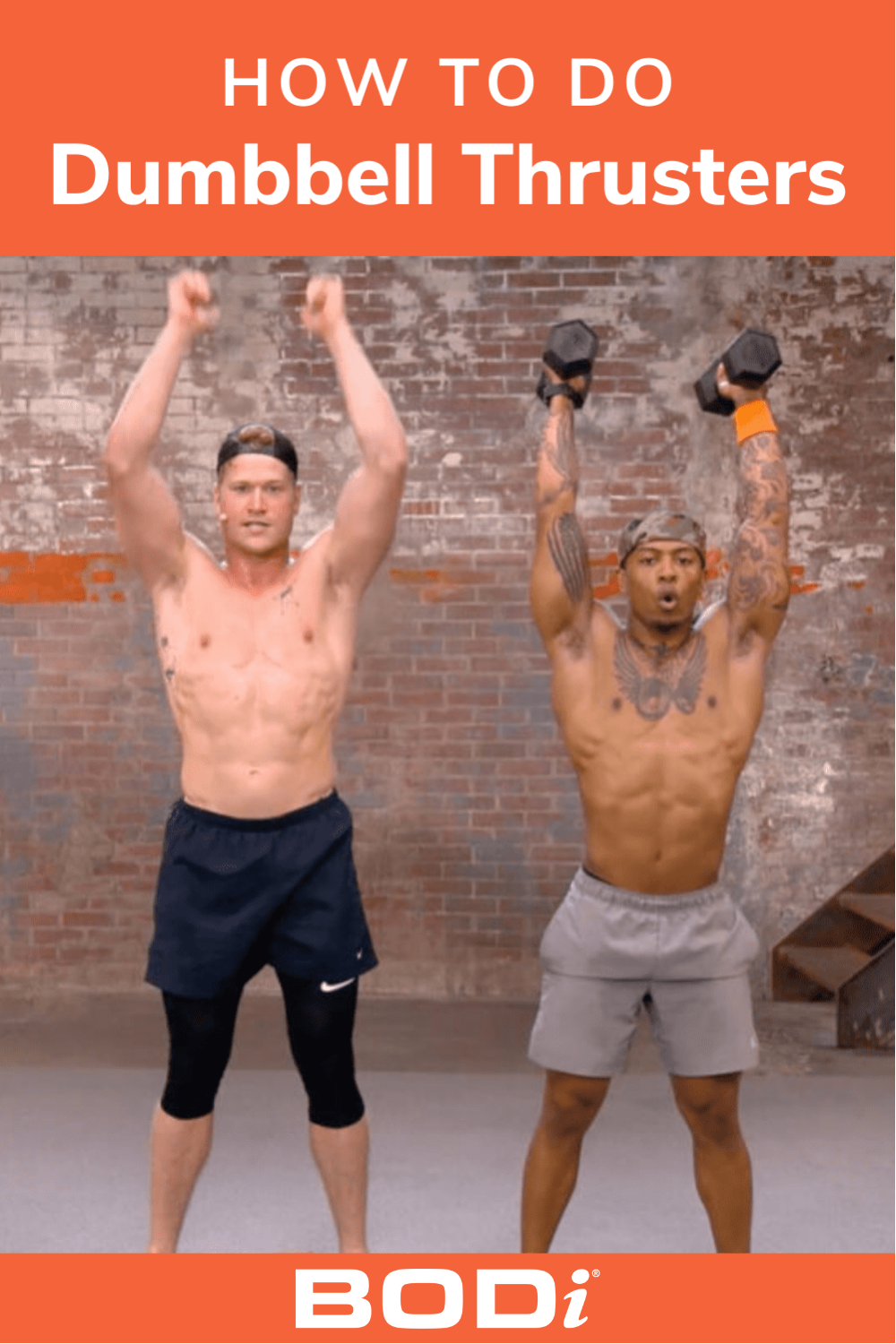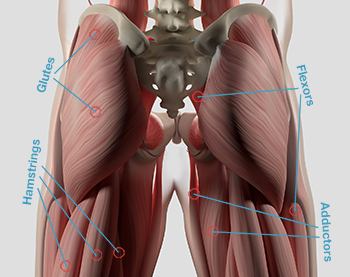Combine a front squat with a push press and what do you get? Dumbbell thrusters.
Also called dumbbell squat thrusters, this exercise works your entire body, giving you a metabolic boost in addition to increasing strength and cardiovascular fitness. That’s why you see so many dumbbell thrusters in CrossFit workouts.
Ready to add dumbbell thrusters to your gym or home workout? Here’s all you need to know.
Dumbbell Thruster: Step-by-Step Instructions
- Stand with your feet hip-width apart, holding a pair of dumbbells in front of your shoulders with your palms facing each other.
- Keeping your abs engaged, push your hips back, bend your knees, and lower your body into a squat.
- Drive through your heels, extend your hips, and, as you straighten your legs, press the dumbbells directly above your shoulders.
- Lower the dumbbells to shoulder height as you return to a squat. Repeat for reps.
Dumbbell Thruster Form Tips
- Keep your core engaged by tightening your entire midsection, as if you’re bracing for a punch in the gut.
- Try to keep your back flat and your weight in your heels so you don’t tip forward.
- Keep your elbows up and arms engaged in front of your body to keep your posture and chest square. Let them drop too low and you risk rounding your back, which can lead to less efficiency and/or injury.
- Drive through your legs — not just your arms — to lift the dumbbells overhead.
How to Make the Dumbbell Thruster Easier
Choose a lighter load and go at a slower pace.
You still want the movement to be fluid, with no stopping, but after pressing into the standing position, you can first lower the dumbbells to your shoulders and then squat back down rather than doing both actions at once.
How to Make the Dumbbell Thruster Harder
Use heavier dumbbells or move at a faster pace.
Variations on the Dumbbell Thruster
1. Perform a push press:
- Stand tall with your feet hip- to shoulder-width apart holding a pair of dumbbells by your shoulders, palms in.
- Keeping your back flat and core braced, push your hips back and bend your knees, lowering yourself into a partial squat.
- Push up explosively with your legs as you press the weights directly above your shoulders.
- Lower the weights back to the starting position, and repeat.
2. Rather than dumbbells, use kettlebells or a barbell.
Benefits of the Dumbbell Thruster
“Dumbbell thrusters are a compound exercise, which means it involves more than one joint,” explains Alexa Cohen, a personal trainer at Crunch Union Square in New York City.
“Thrusters elevate your heart rate, thus improving your cardiovascular fitness and performance. They also help boost your metabolism, increase your muscular endurance and strength, and improve coordination.”
They also build power, which is a combination of strength and speed, thus promoting explosiveness and athleticism.
What Muscles Does the Dumbbell Thruster Work?
The dumbbell thruster is a full-body exercise, training both your upper half and lower half at the same time. You can expect gains (and a burn) in these muscle groups:








